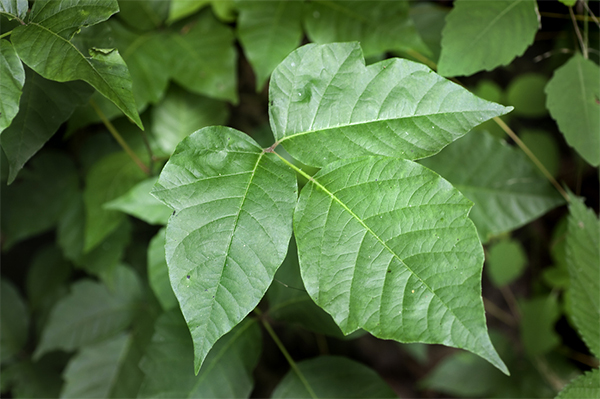Nothing is better than camping, fishing, hiking, running, gardening, jumping and playing in the great outdoors. But beware, there are three poison plants out there just waiting to break you and your child out in a terribly itchy and often painful rash.
What they have in common.
Poison oak, poison ivy and poison sumac all contain oil called urushiol that is absorbed into the skin. It is contact with, and an allergic reaction to, this oil that causes the rash. Not everybody who comes in contact with the oil has an allergic reaction. Contact with the oil can be a result of direct contact with the plant, however, it can stick to things like clothing, gardening tools and pet hair. If a person comes in contact with the oil in any form they can be affected. Since it is only contact with the urushiol that causes the onset of the rash, none of the rashes are contagious and the rashes do not spread. Different parts of the body may break out with the rash at different times, giving it the appearance that it is spreading. It is important to note that burning the plants can release urushiol into the air and a person can be exposed if particles land on their skin or clothing.
Since urushiol is the culprit, all three plants can cause rashes that look similar and tend to appear 12 to 72 hours after contact with the oil. Parents should look for:
- Redness
- Hives
- Blisters
- Itching
- Pain
Most often the rash will go away within one to three weeks. Scratching the rash should be avoided since it can result in a skin infection.
Identifying the Poisonous Plants
According to the American Academy of Pediatrics you can identify the three poisonous plants by the following:
“Poison ivy (Rhus radicans) is found throughout Canada and the United States along rivers, lake shores and the edges of woods, streams, fences and even buildings. It can be a woody shrub or a vine climbing along the ground or high in trees or poles. The sentinel finding is alternating, shiny three leaflets. Whitish flowers and fruits hang in a non-hairy drupe. The jingle “Leaves of three, quickly flee; berries white, poisonous sight” should be heeded!
Poison oak (Rhus toxicodendron) is a low shrub found in sandy soil, dry barrens or pinewoods in restricted geographic areas of New Jersey, Maryland, Missouri, Tennessee, south to Florida and Texas. It also has three leaflets whose undersides are hairy, as are its yellowish flowers and fruit.
Poison sumac (Rhus vernix) is a shrub 5 to 8 feet tall or a small tree that has smooth grey bark and pinnate leaves that alternate between 7 and 11 leaflets. The stalks are reddish, and fruits hang in cream-yellow hairless drupes.”
How to Avoid Contact
The ability to identify the plants and avoid contact is the best prevention. The AAP makes the following recommendations to avoid a reaction to urushiol.
- Apply a skin-care product called an ivy block barrier before going outdoors. You can buy these products without a prescription.
- Wear long pants, long sleeves, boots and gloves. Even when you apply an ivy block barrier that contains bentoquatam, you need to cover your skin with clothing.
What to do if your child has contact with one of the poisonous plants
- Immediately rinse his/her skin with lukewarm, soapy water.
- Wash their clothing.
- Wash everything that may have the oil on its surface.
What to do if your child develops a rash
- If blisters open, do not remove the overlying skin.
- Take short lukewarm baths or short cool showers.
- Add a colloidal oatmeal treatment or 1 cup of baking soda to bath water.
- Apply calamine lotion or hydrocortisone cream.
- Administer an over–the-counter oral antihistamine like Benadryl.
- Apply cool compresses to the rash.
- Do not let your child scratch the rash.
When to take your child to the emergency room
- If your child is experiencing swelling, especially swelling of the eyes or face.
- If your child is having difficulty breathing or swallowing.
- If the rash covers most of his/her body or he/she has multiple rashes.
- If the rash appears on your child’s face or genitals.
- If your child develops a fever.
A pediatrician should see your child if nothing works to subdue the itch or if there are any signs of infection.
For more information about the pediatricians at Children’s Hospital of Georgia visit augustahealth.org/chog or call 706-721-KIDS (5437).
Source: The American Academy of Pediatrics




